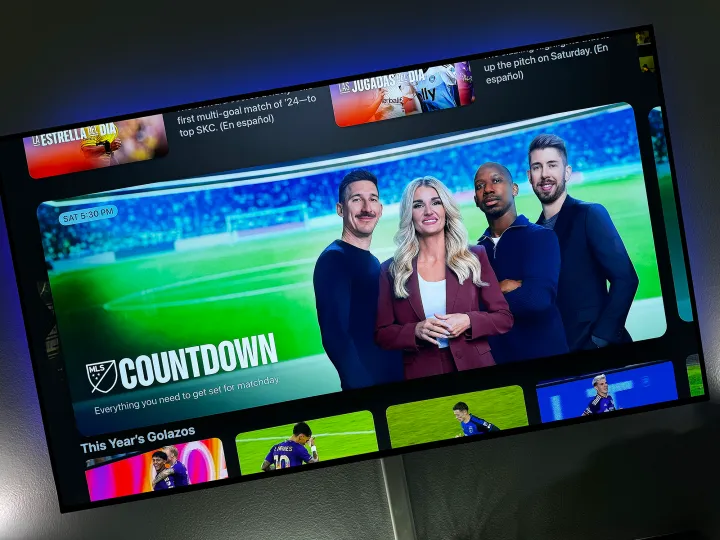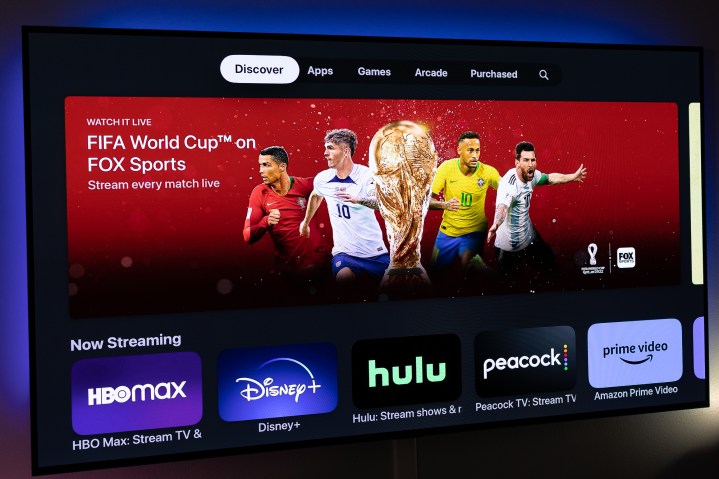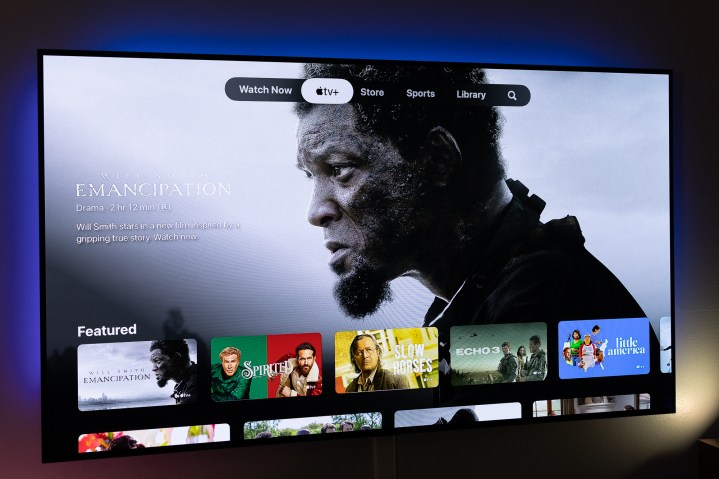Do you know what Apple TV is? It’s not just a streaming device or an app — it’s an entire ecosystem encompassing hardware, software, and even a premium streaming service.
Apple TV — the hardware — is a small streaming device you put in your living room, bedroom, or wherever. The Apple TV app is usable on your mobile device or smart TV and gives you access to much of the same content you’d find on the physical Apple TV box.
Meanwhile, Apple TV+ is a premium streaming service. You pay for it to access high-quality video content, including films, TV shows, sports, and more.
Are you still confused? Don’t be. Let’s take a look.

Apple TV hardware
Generally speaking, when you talk about Apple TV, you’re talking about hardware, or what commonly is referred to as a set-top box, which plugs into your television via HDMI. The official name of the current hardware is Apple TV 4K, which is now in its third generation.
The box itself is about the size of a couple of decks of cards. And in typical Apple fashion, it’s a pretty stark design. Matte black plastic, with just the Apple logo on top, and some ports on the back.
There now are a couple of versions of Apple TV 4K, which was last refreshed in October 2022 and sport mostly minor improvements on the previous version. They share the same parts and features for the most part. Apple refers to them as the “Wi-Fi model,” and the “Wi-Fi + Ethernet model.”
As the names imply, one only has wireless networking, and the other has a gigabit Ethernet port. That’s not the only distinction, though. The model with Ethernet has double the onboard storage at 128GB, and support for the Thread networking standard, which will make smart home support even more seamless.
Both models are powered by Apple’s A15 Bionic processor, which means both are very overpowered for what they currently do. That’s not a bad thing, though.
And both share the same Siri Remote. It’s still the sleek silver deal we’ve enjoyed for a while now (and it’s still perhaps a little smaller and boxier than you’d like). It still has a combination directional/clickable button/pad thing that sounds weird on paper but works fine in actuality, with a minimal smattering of buttons. And it has proper power and volume controls, so there’s a pretty good chance it’ll be the only remote you need.
And it now recharges via USB-C instead of Apple’s proprietary Lightning cable.
The Wi-Fi-only Apple TV 4K costs $130, while the one with more storage, plus Ethernet and Thread support, costs $150. In case you need us to spell it out, you should just go ahead and spend the extra money. Because if you can plug in into your network, you should. and if you ever want support for Thread, this is how you get it. And nobody has ever said, “Welp, I wish I didn’t have this much storage for apps and stuff.” Just do it.
Apple TV software
The original Apple TV hardware was born in January 2007 and ran a modified version of Mac OS X Tiger. Things have changed quite a bit since then, of course. Apple tvOS is a dedicated branch of Apple software that feels a little bit like if you told someone to take the iPhone or iPad experience and stick it on a living room-sized display.
The home screen is as simple as it gets — icons for apps. And those apps all come from the Apple TV app store.
And … that’s it. Mostly. You can hold down the TV button on the remote to slide open a Control Center that very much looks like what you’ll find on iPhone, iPad, or a Mac. Or click it twice to see thumbnails of your open apps, which you can then swipe away to close manually.

Available apps run the gamut. There are all the streaming services, of course, like YouTube TV or Hulu With Live TV. And utilities. And music and other videos. And if you’re a gamer, Apple TV has a bunch at the ready, too, via Apple Arcade.
There’s also support for multiple user accounts, so you can have a completely different experience from a family member, be it apps or notifications or whatever. And tvOS remains an excellent platform for things like AirPlay, where you can mirror your phone or use the feature to watch any content from a handheld device or Mac on your TV instead.
And if you’re the owner of an Apple Watch, Apple TV is a brilliant way to use Apple Fitness+.
For those who are into Apple’s smart home ecosystem, Apple TV (the hardware) allows you to use HomeKit (the software) to control supported devices. That ecosystem should grow exponentially once Thread support is mainstream, so that’s a reason to get the more expensive of the two current Apple TV 4K options.
Like other Apple products, tvOS will see updates alongside Apple’s other software.
The TV app on Apple TV
We’ve mentioned the TV button on the Siri Remote. Press it, and it takes you to the TV app. This is where things start to get a good bit more confusing.
The short version is that Apple is trying, with various degrees of success, to make the TV app the one place to go for all TV on Apple TV. Except it’s not.

A number of major video apps allow their content to be surfaced in the TV app. That’s how you might see an on-demand movie from, say, HBO Max, alongside something from Disney+ or Amazon Prime Video. There are more than 130 services that can pipe content into the TV app. But not participating, still, is Netflix. So for as good as the TV app is in helping you figure out what you want to watch without having to care about which app you’ll be able to watch it on, it’s not all-encompassing.
The Apple TV app also is where you’ll find MLS Season Pass. It’s a separate subscription that gets you every MLS game, plus playoffs, without any blackouts. In addition to the live games themselves, you’ll also get replays, interviews, and features on every team.
The cool thing, though, is that the TV app is available on iOS, iPad OS, Mac OS, and Apple TV.
But it definitely tends to make things a little more confusing, and we wouldn’t blame you for ignoring it.
Apple TV+ streaming
Then there’s Apple TV+. It’s Apple’s own premium streaming service that is all about exclusives. If you’re watching it on Apple TV+, be it a movie or series, you can’t watch it anywhere else.

Apple TV+ also is required if you’re going to watch Friday Night Baseball. Apple used to show games for free. But starting with the 2023 season, you’ll need a subscription.
But there’s nothing particularly exclusive about Apple TV+ itself. While, yes, you can watch Apple TV+ in the TV app on your Apple TV, you also can watch it pretty much anywhere else, be it on hardware from Roku or Amazon, or even Google. Or in a web browser. And that makes sense, because what good is a streaming service that’s only available on certain hardware?
Apple TV+’s exclusivity is not particularly unique. Although you can watch it on the Apple TV app, you can also access it on other platforms such as Roku, Amazon, Google, and web browsers. This widespread availability makes sense because a streaming service wouldn’t be beneficial if it were only accessible on specific devices.
Apple TV+ can be purchased for as little as $9.99 per month after a 30-day trial or $99 for an entire year. It’s also available through any of the Apple One bundles, which start at $19.95 and include other Apple services like Apple Music, Apple Arcade, iCloud storage, and more.
In some cases, you can get an Apple TV+ subscription for free when you purchase a new Apple product. However, that offer isn’t available very often.
Services Marketplace – Listings, Bookings & Reviews